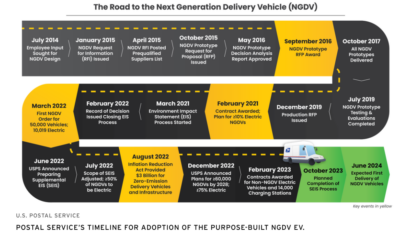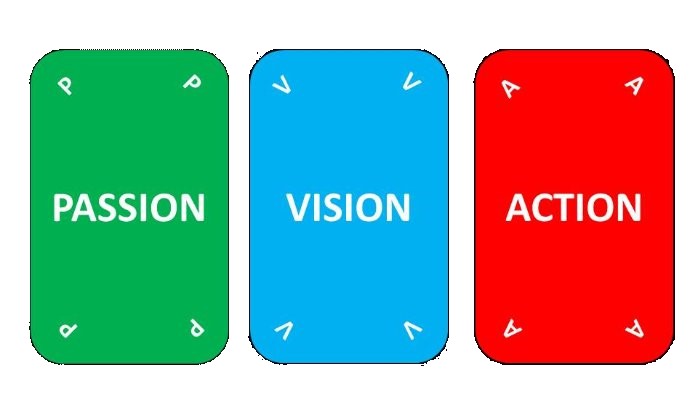Your Mail, Powered by Siemens, Rexel and Blink EVs
 Much is discussed regarding the EV market and many manufacturers are offering EV charging solutions. Government funding, coupled with automotive industry investments, is driving the EV industry.
Much is discussed regarding the EV market and many manufacturers are offering EV charging solutions. Government funding, coupled with automotive industry investments, is driving the EV industry.
And while the government is providing business and consumer subsidies, states are investing in infrastructure and providing their own grants and companies are investing as they view EV chargers as amenities, part of ESG initiatives or feel it is a good economic investment, the US Postal Service is investing much.
This CleanTechnica article highlights USPS’ three year investment into EV chargers to support a major vehicle investment. At the end of the day, your mail will be traveling in battery-powered vehicles.
USPS Charging Stations Begin Arriving At Sorting & Delivery Centers
This week the United States Postal Service (USPS) unveiled its first set of electric vehicle (EV) charging stations at an event at its South Atlanta Sorting and Delivery Center (S&DC). USPS charging stations like these will be installed at hundreds of S&DCs across the country throughout 2024, signaling a systemic shift from delivery dependence on internal combustion engines (ICEs) to an embrace of zero emissions vehicles.
USPS charging stations will power the nation’s largest EV fleet. Electrification and modernization of the Postal Service’s delivery fleet is part of the organization’s $40 billion investment strategy to upgrade and improve the USPS processing, transportation, and delivery networks.

Graphic supplied to CleanTechnica and the author by USPS
At the event USPS also showcased new battery powered and domestically manufactured commercial off-the-shelf delivery vehicles that will make up a portion of the Postal Service’s EV fleet. Deployment of electric delivery trucks will start in Georgia and then expand to other locations across the country. The procurement of EVs and USPS charging stations is enabled by overall network modernization efforts, which allow more rapid EV deployment, as well as its improving financial condition, which includes $3 billion in Congressional funding appropriated under the Inflation Reduction Act (IRA).
“In every neighborhood in America, people know their postal carrier and recognize the USPS vehicle driving down their street,” said John Podesta, senior advisor to the President for Clean Energy Innovation and Implementation. “The work USPS is doing to electrify those vehicles is making EVs commonplace on every road and street in our country, while reducing air pollution and increasing comfort and safety for the dedicated public servants who deliver our mail.”
As part of its 10-year Delivering for America (DFA) plan, the Postal Service expects to convert approximately 400 selected sites into S&DCs nationwide. These centers – which provide faster and more reliable mail and package delivery over a greater geographic area – will serve as the local hubs to deploy EVs along local carrier routes.
- Siemens announced their selection by the USPS as an EV charging infrastructure provider for fleet electrification efforts will contribute to Siemens’ goal to manufacture 1,000,000 EV chargers for the US. This goal, they say, is “supported by the transformational investments being made to strengthen and modernize American infrastructure.”
- Rexel Energy Solutions was awarded a 3-year contract with the USPS. The contract includes two additional options of two-years each and a potential maximum of 41,500 stations which can be ordered during the contracts period of performance.
- Blink received an IDIQ contract by the USPS to sell up to 41,500 EV charging units to support EV charging infrastructure for the USPS as part of its vehicle electrification strategy.
The celebratory unveiling event featured battery electric COTS vehicles manufactured by the Ford Motor Company. USPS plans on procuring a total of 21,000 COTS EVs — including 9,250 from Ford — depending on market availability and operational feasibility. Last year the USPS awarded contracts to Ford for the left-hand-drive regular production E-Transit electric vans as well as 14,000 EV charging stations to support their use.
The Postal Service also anticipates adding at least 45,000 battery-electric Next Generation Delivery Vehicles by 2028, bringing the total number of EVs in the delivery fleet to more than 66,000. This represents one of the largest commitments to vehicle electrification in the nation. USPS is also exploring the feasibility of achieving 100% electrification for its delivery vehicle fleet.
Moreover, updating and modernizing the Postal Service’s fleet will allow delivery vehicles to haul larger volumes of mail and packages. For example, the Ford E-Transits displayed at the event have nearly 3 times the cargo capacity of the Grumman LLV delivery vehicles that the Postal Service currently uses. Increased cargo capacity will reduce inefficient transportation, improve delivery operations, and eliminate the need for many second trips carriers take to deliver high volumes of packages.
Yesterday, the USPS noted that it is set to purchase 6 right-hand drive versions of the Lifestyle Delivery Vehicle 190 from Canoo as part of the overall modernization of the USPS. The Postal Service will take delivery of these vehicles soon in Q1, 2024. This effort is part of the USPS’s $40 billion investment strategy to upgrade and improve the organization’s processing, transportation, and delivery networks. “The multi-purpose platform with steer-by-wire technology and a unique low-profile suspension system allows for a readily configurable right-hand drive system while maintaining desired roll and ride stability,” said Tony Aquila, Canoo’s executive chairman.
Many of the Postal Service’s 217,000 trucks are more than 3 decades old, so these steps toward full fleet electrification are well overdue.
Final Thoughts about USPS Charging Stations
The percentage of zero emission vehicles (ZEVs) in the USPS fleet has increased substantially. Hopefully, the pattern will extend to the deployment of ZEVs in communities experiencing environmental injustices as the USPS commits to future purchases.
The plan to focus on ZEV deployment within the fleet — given the massive lifetime cost savings of ZEVs and the fact that, according to the USPS, 90% of routes could be served by electric delivery vehicles — is prudent, according to Sam Wilson of the Union of Concerned Scientists. Wilson continues that a USPS fleet that emphasizes delivery electrification potential would not only help to reduce climate warming and air pollution but would also make EVs more commonplace in every community across the nation.
Overall, the Postal Service’s total investment in vehicles is expected to reach $9.6 billion, including $3 billion from Inflation Reduction Act funds. The December 2022 plan called for acquisitions over the next 5 years to make the 75 Next Generation Delivery Vehicles fleet 75% electric by 2025. Acquisitions of new delivery vehicles for the postal service after 2026 will be 100% electric.
The effort has started, albeit slowly .As of January, 2024, the Postal Service has opened 29 S&DCs nationwide.
“The improvements we need to achieve in sustainability are an integral outgrowth of the broader modernization efforts we have undertaken through our 10-year Delivering for America plan,” said Postmaster General Louis DeJoy. “As we transform our operating processes and invest in new automation, new technologies, and upgraded facilities and vehicles, we will generate significant efficiencies that reduce our costs, slash our carbon footprint, and minimize waste.”























